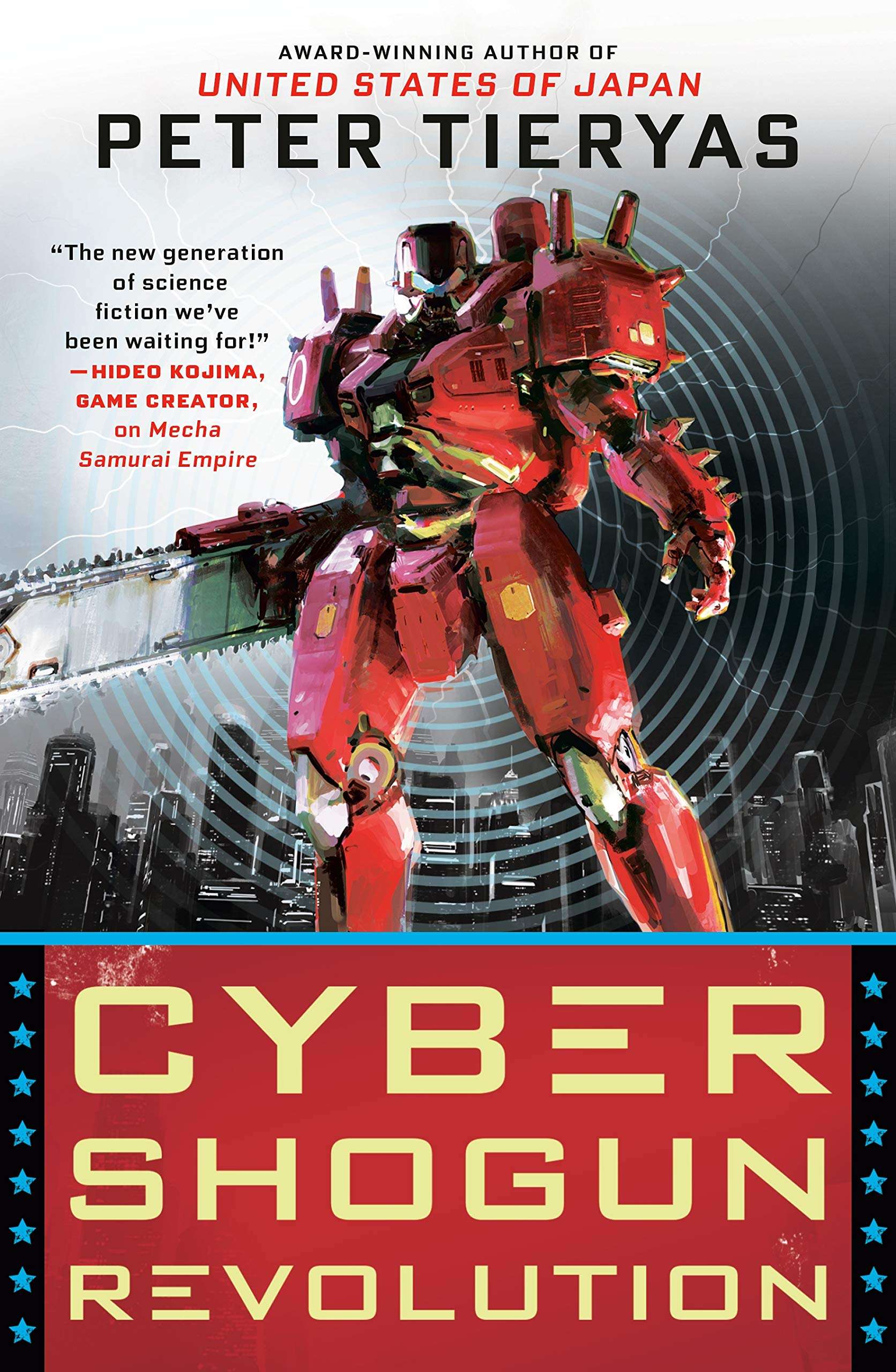Cyber Shogun Revolution, by Peter Tieryas
I’m just going to lay it out there because it’s just that way it goes nowadays: if you enjoy escapist, mecha-culture, you should really be reading the works of Peter Tieryas. Starting with 2016’s United States of Japan, followed by 2018’s Mecha Samurai Empire and now Cyber Shogun Revolution, they combine a Man in the High Castle-esque retelling of history with a distinctive mecha anime/cyberpunk aesthetic and a good dosing of Japanese pop culture.

Each of these books is a standalone novel set in the United States of Japan, established after the Axis triumph of World War II. America has been split between super powers Japan and Germany, which are now involved in their own hostilities. There is still an American revolutionary movement – the George Washingtons – but the world has pretty much moved on.
Of the three novels, Cyber Shogun Revolution is perhaps the most accessible – which might be its biggest drawback. In it, we have two disparate (yet evenly matched) law enforcers, one from a military background and one from the secret police, who just happen to know each other from high school. Both are on the winning side of a power coup – kinda, sorta – but neither one is totally comfortable in the actions of the new government since then, especially in the form of a possibly rogue killing agent known as Bloody Mary. Still, questioning the party line has never been a great career move. Suspicions continue to crop up, and as time goes on it becomes darned hard to determine who is a good guy, who is a bad guy, and who is the poor guy simply caught in the wrong place at the wrong time.
The settings, environment and feel of Cyber Shogun Revolution, as with the novels that preceded it, are amazing, and honestly pretty fun as long as you don’t get hung up on the USA as we know it being long gone. Peter Tieryas is able to give us a world that feels seamless – the foods, the cultural trappings, the slant on history, heck, even the naming conventions, all hang together in a solid offering. (I especially love how one of the characters, Bishop Wakana with the secret police, originally wanted to become a chef, which leads to some fun interaction between himself and mecha designer/pilot Reiko Morikawa. “I never knew that fried chicken and tater tots worked so well with sushi rice and wasabi.” “‘If I remember correctly the first thing you told me was that it looked awful,’ Bishop said.” “It did. But it was tasty.” “‘I have a secret ingredient that helps it blend together,’ Bishop explained.” “What secret ingredient?” “I wouldn’t be a good Tokko agent if I didn’t keep my secrets.”)
What doesn’t work quite as well is the choppy narrative, both on the page and depicting the scenes. While that might be a fine convention for a samurai movie, it doesn’t work quite so well for a novel. It’s hard to build up empathy for characters that we only really see in declarative mode, with predictable outcomes.
Still, what the novel lacks in emotional punch, it certainly makes up for in actually punching. There is a lot of fighting in this book, both by organics and by mechas – but especially by mechas, and they are glorious. Each one is diverse, with specialized weaponry and a distinct fighting style. Not only are their designs well realized, but the fight scenes are exceptionally well conceived and related; cohesively staged and realistically expressed. (Well, I assume realistically expressed… I’m not exactly an expert!) I’m not really a military action aficionado, but when well done, fight scenes can be very entertaining – and the fight scenes in Cyber Shogun Revolution were consistently entertaining, despite their frequency. In fact, their frequency was a boon to the book.
All in all, Cyber Shogun Revolution is a great escape from reality, as are all of Peter Tieryas’ United States of Japan novels – and we sure can use all of that we can get in these days.
—Sharon Browning

